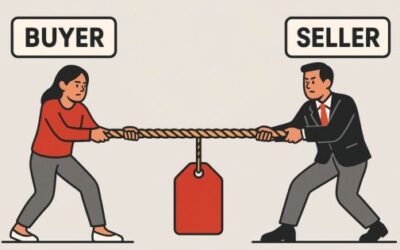The term ‘sales pipeline’ is more than just a phrase tossed around in meetings. It is a critical framework for a thriving sales organization that represents the journey of potential customers from their initial contact with the company to the final sale. The guide explores the intricacies of the sales pipeline, highlighting it’s role and offering insight to optimize your own.
What is a sales pipeline?
A sales pipeline is a system to track and manage leads as they progress through the various stages of the purchasing process. It visualizes the lifecycle of customer relationships, from the first interaction to the signature on the bottom line. It serves as a vital tool for sales forecasting and strategy development.
Stages of a sales Pipeline
Understanding the typical stages of a sales pipeline is key to effectively managing it. These stages may vary slightly depending on the business or industry, but they generally include:
Prospecting / Lead Generation
The initial stage. Identifying potential leads and connecting with the customer for the first time. This could be through networking, marketing campaigns, or cold outreach.
Lead Qualification
Once a lead is collected, they must be assessed for their potential to turn into a paying customer. Teams should analyze factors such as:
- Does a problem exist?
- Does the buyer admit they have a problem?
- Can I fix the problem?
- Is the buyer willing to go on the journey to fix the problem?
This step should happen multiple times. As you gather more and more information about the lead they may lose their qualification status.
Discovery
When a lead is initially qualified, it’s time to get them on the phone and begin to ask questions to get a better understanding of the problems they are facing and whether your product or service can solve the problem. This is also the point in the process where you want to quantify the impact of the problem.
Recommendation
Next, it’s time for the team to present how their product or service can address the specific problems of the lead. This is the time for a product demo. It’s important to remember that you should only be showing features that directly relate to the problem being solved.
Negotiation
This is the time for any feedback from the lead. Objections to the price or offering will need to be addressed in this phase.
Close
The culmination of the pipeline is where the sales is finalized. This could involve contract signing, payment, and finalizing the delivery or implementation details.
Post-sale engagement
Following up with customers to ensure satisfaction, address any issues, and ideally generate repeat business or referrals.
Why is maintaining a sales pipeline important?
A well-managed sales pipeline allows for accurate sales forecasting, which aids in realistic and strategic goal setting. A solid pipeline helps to streamline the sales process, ensuring tracking and measurement of leads is efficient and accurate. It also allows for quick identification of flaws in the process.
Constructing and Managing a Sales Pipeline
Understanding your Target Audience
Begin by clearly identifying who you customers are based on the problems you can solve. Be sure that you fully understand the problems, impacts, and root causes of these problems.
Customize Pipeline Stages
Tailor the pipeline stages to align with your sales process. It’s possible you wont need every step highlighted above or you may have additional steps like a data collection phase.
Implement Lead Scoring
Develop an approach to score and qualify leads so that you only focus on the most promising prospects.
Regular Monitoring and Refinement
Continuously monitor the pipeline performance and make the necessary adjustments based on your sales metrics and changing market conditions. For example, in economic downturns, it may make more sense to focus less on lead generation and more on moving your highest scoring prospects through the pipe.
To make these adjustments truly effective, it’s not enough to just look at the numbers—you need a disciplined, structured approach to pipeline reviews that challenges assumptions, validates deal quality, and keeps your team focused on real opportunities. A high-impact pipeline review process ensures you’re prioritizing the right deals, identifying risks early, and driving revenue even when the market shifts.
Utilize CRM Tools
Use your existing customer relationship management (CRM) tools to track, manage, and analyze the data in your pipeline.
Additional insights from your Pipeline
Once you have your pipeline in place, you must continue to utilize the information it generates. Where are your potential buyers getting stuck? Leverage the data to make informed decisions about pipeline management and you sales strategy.
Collaborate with the marketing team to ensure alignment between the sales team, sales strategy, and their messaging and lead generation.
Regularly train your sales team on best practices for moving leads through the pipeline effectively. If you struggle to build pipeline, bring in a prospecting expert. If you struggle to turn leads into paying clients, take a look at your discovery call strategies and the prospects your considering high value.
A strong sales pipeline is a vital component of any successful sales strategy. Understanding, managing, and optimizing it can lead to improved forecasting accuracy, better customer relationships, and ultimately, increased revenue.







For a man who has stated and I’m paraphrasing “maintaining a good pipeline is one of the single most important aspects and future of sales”, this is a really basic article. I expect more
Hey Matt, if you’re looking for more advanced information on pipeline I would suggest this eBook > https://salesgrowth.com/deal-management-ebook/